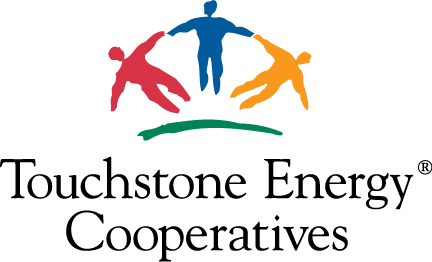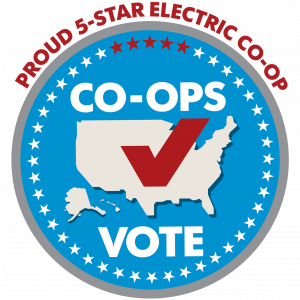SIF Prevention and Senior Leadership
By Dwight Miller
A 28-year old service tech’s upper wrist makes fatal contact with 120V as he kneels in front of a padmounted transformer connecting a temporary service. A 49-year old veteran is run over and killed by a drunk driver on a state route as he crosses the road to pick up a downed conductor on a storm. A tree falls down and strikes a bucket and truck chassis as a crew works to restore power while the wind is still blowing; one worker receives life-threatening injuries to the head. An apprentice is electrocuted when the crew is setting an inline pole under 115kV with inadequate clearance as the pole makes contact with the line while the worker’s shoulder is touching the pole ground. A wye-wye padmount transformer with common core construction loses one phase and backfeeds into the system, electrocuting a worker who had used a temporary ground to “ensure sure the cable was dead” before replacing the burned-up elbow. A lineman getting ready to leave on vacation that evening is replacing a porcelain cutout at a capacitor bank, but forgets to first remove the jumper from the cutout to the phase and the worker loses both arms. A lineman working in a high fault current substation macks out a PT instead of a CT because he was unfamiliar with the apparatus and suffers serious arc flash injuries.
Welcome to the world of SIF’s, a.k.a. Serious Injuries and Fatalities, the relentless, nagging statistical nightmare that refuses to budge while everything around it keeps improving. It’s the nightmare that hangs around and lives on in the memories of families who no longer have the father or brother or husband or grandfather to love them, to raise them, to kiss them, or to smile at them when they come home.
The incidents above? These are just the last seven SIF-related S.A.F.E. Talks that we have put out in Ohio over the last 10 weeks at the time of this writing. What do these incidents all have in common? Of course, we would never know unless an in-depth incident analysis would be conducted for each incident and compared. But it’s not a coincidence that root causes of most (not all) serious injuries and fatalities often have the commonality of a lack of attention to safety at multiple levels in an organization, usually starting at the top. Lack of engagement in safety always results in critical portions of a safety program being left unattended and even seen as unimportant until a serious incident occurs when it rises to the forefront when everyone wants to know how such a thing could ever happen. “They knew the rules, didn’t they? Then, what were they thinking?”
At the root cause level, I would propose that SIF-related incidents will typically point to one of two conditions concerning leadership engagement: (1) senior leaders completely failing to engage in safety, producing toxic culture that actively resists their safety program, or (2) senior leaders who truly care and want to engage in safety, but simply lack confidence and understanding on how to effectively guide their safety program. As a result, they will sometimes abstain from engagement or assign overall responsibility of the safety program to someone else, or worse yet, take missteps when they do engage.
You may ask, “Why? Why would the senior leader bear so much responsibility when the worker in the field ultimately makes the decision?”
Senior leaders set the expectations for an organization’s performance and help keep workers on task by holding them accountable to whatever they consider important. In the world of safety and human performance, we have learned that context drives behavior. People adapt to meet the perceived demands of complex and dynamic work environments. If a lineman feels that the demand is getting back home safely above all else, that lineman will figure out how to best meet that demand and thus focus on and prioritize safe work practices above everything else. But if workers sense that the demand is getting the lights back on as quickly as possible, they will quickly pivot and figure out how to do just that while deciding what “unnecessary safety steps” they can eliminate in order to “git ‘er done”. If the demand is production, the apprentice will need to wait to get experience because he’s too slow to waste time on that. But if the demand is developing the apprentice, then production may suffer a bit while the crew leader takes time to develop the apprentice at the proper pace. In other words, we can teach them safety rules all day long. But context, a.k.a. culture, drives decisions, often overriding safety rules. “No, I mean how do we really do the job?” Culture wins every time, and that’s how senior leaders drive behavior: by setting expectations.
Bud Branham, NRECA’s former director of safety programs, laid out how he saw senior leadership in America’s 900+ cooperatives when he worked with senior leaders all across the nation. He saw an estimated 20% of cooperative CEOs actively engaged in their safety programs, producing a strong safety culture, resulting in the strongest safety programs. Then he saw about 6% with little to no engagement, often resulting in a toxic culture that actively worked against worker safety in the organization, producing the weakest safety programs. But he saw about 74% with limited engagement, and he explained this is usually where the CEO has good intentions but lacks confidence and understanding of how best to engage and therefore leaves it up to others to set the tone for safety. Or maybe the CEO engages using ineffective safety concepts and it becomes a negative experience.
What are some real steps that 74 out of every 100 senior leaders can take to more effectively engage in their safety programs? Funny you ask because the new Leadership Commitment portion of the RESAP program was intended to do just that: provide an easy way for a senior leader to self-assess and determine if they are effectively engaging in their safety programs in basic ways. And if not, then it provides actionable items they can take in order to do so.
Let’s review these principles that every senior leader has the opportunity/requirement to self-assess on every three years in the RESAP program:
Question #1 is related to the Safety Improvement Plan (SIP), the lifeblood of continuous improvement for your safety program and keeping safety front and center in your organization. After asking a couple of questions concerning frequency of engagement, here are follow-up actions it gives for the CEO/GM to consider:
- Ensure responsibilities for creating and accomplishing an SIP are clearly assigned to the proper team or individuals.
- Review status of SIP as a regular agenda item during senior staff meetings.
- Review status of SIP on a periodic basis with the cooperative board of directors.
Question #2 is related to two-way safety conversations with employees. After asking how often the senior leader engages in such safety conversations, here are follow-up actions it gives for the CEO/GM to consider:
- Ask the employee who supports safety at your cooperative to schedule periodic safety visits on your calendar to meet with employees in their work environment and create two-way discussions on safety throughout the year.
- Create opportunities for two-way conversations on safety by being present in employee work areas such as the warehouse, the linemen’s office area, truck bay, jobsite, etc.
Question #3 is related to conversations with direct reports concerning crew observations conducted by their supervisors. After asking how often you have such conversations, here are follow-up actions it gives for the CEO/GM to consider:
- Ask direct reports what they believe is the appropriate frequency of crew observations in their functional areas and reach consensus based on level of risk.
- Set a reasonable review cycle as an agenda item during senior staff meetings to discuss findings.
- Establish expectations for direct reports’ tasks and responsibilities for safety.
- Conduct face-to-face discussions with safety staff regarding ongoing safety performance.
Question #4 is related to perceived effectiveness of the safety committee. After asking how effective the senior leader believes it to be, here are follow-up actions it gives for the CEO/GM to consider:
- Attend a safety committee meeting unannounced; ask for candid feedback on committee progress and needs.
- Periodically check in with committee members and reinforce leadership support for their work.
Question #5 is related to positive recognition of an employee or group of employees for their work that supports safety. After asking how often the senior leader provides such recognition, here are follow-up actions it gives for the CEO/GM to consider:
- Look for opportunities to give special face-to-face appreciation to individuals or employee teams/crews for exceptional efforts and/or accomplishments in safety (this should not be related to injury data, but rather of a proactive nature).
- Look for opportunities to let employees share their specific safety accomplishments with the board of directors.
- Review safety accomplishments beyond injury rates and measures (such as inspection reports and follow-up, near miss reporting, etc.)
In addition to these things, a strong leading indicator we have seen emerge in Ohio over the last few years is effective in-house safety meetings, especially when the meeting includes senior leader engagement. And we are not talking about 5-minute meetings, but meaningful, structured weekly meetings, lasting at least 20 minutes, beginning with discussion of the S.A.F.E. Talk and then a time when workers openly discuss important issues, including near misses.
When senior leaders engage in the safety program at a high level, it’s an unparalleled force that has the power to influence the actions of all workers at all times. Contrary to popular belief, decisions concerning shortcuts in the field are usually determined long before the crew ever goes to work.
Culture is simply the sum of whatever we permit and promote in our organizations. Culture then drives demand which in turn drives behavior. And when behavior adheres to the established standard, this expands the workers’ margin for human error. And that expanded margin of error is often the difference between an SIF incident and getting everyone back home safely to their families at the end of the day.
Take the self-assessment today: https://resap.cooperative.com/#/new-resource-library





